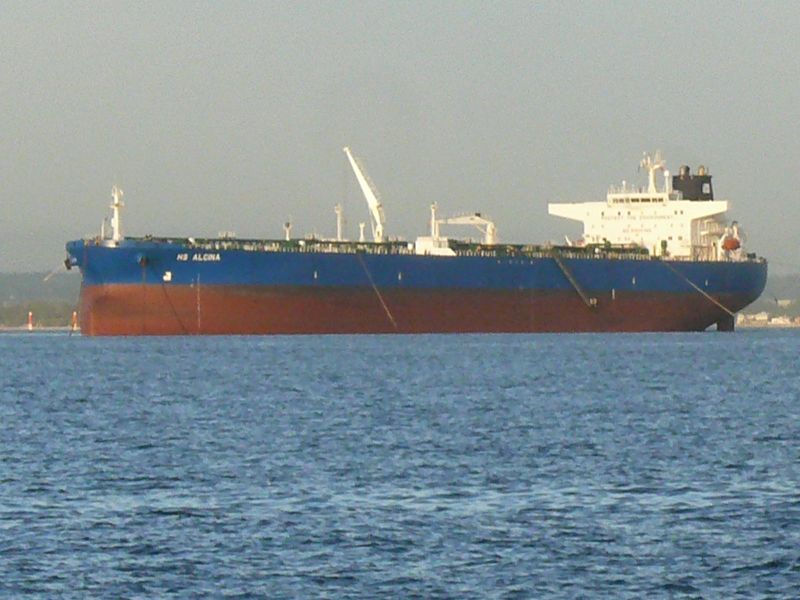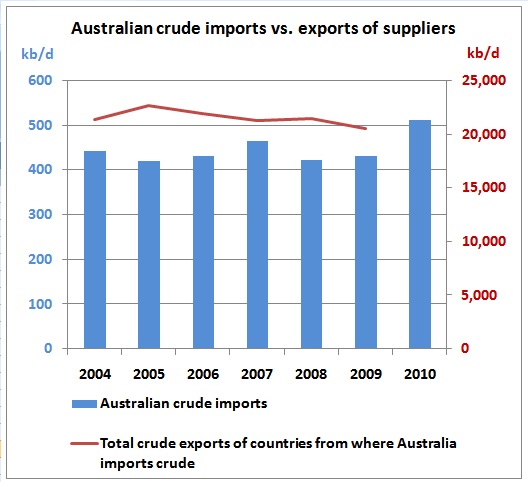Australia imported a record 519 Kb/d of crude oil in the 12 months from March 2010 to February 2011, 50 Kbd/d or 11% higher than in the last boom period of 2007/2008. This is clearly unsustainable as crude oil exports from those countries which supply this crude to Australia have actually declined by 2,100 kb/d from their peak in 2005.
What we can see from the graphs:
(1) Australia’s main crude oil suppliers in 2005 peaked in the year in which Saudi exports peaked. More details are in this post:
31/7/2010 Saudi Aramco’s crude oil exports peaked in 2005
http://www.crudeoilpeak.com/?p=1738
(2) Since then, imports from the United Arab Emirates have replaced those from Saudi Arabia, even exceeding them by around 10 Kb/d. Australia’s dependency on crude oil from the Persian Gulf has therefore not been reduced in absolute volumes and stands now at 12%.
(3) The Asian group peaked in 12/2007, despite a recent rebound in Malaysia
(4) New Zealand has come up strongly – from new fields
(5) But (1) – (4) was not enough to lift Australia’s crude imports above the 2007 peak. Who came to the rescue? Far away countries Russia and Azerbaijan as well as African suppliers like Algeria, Libya (!), Nigeria, Congo Brazaville and Gabon. The latter 2 countries contributed 12% in the months Dec 2010 to February 2011. The high Australian dollar has definitely helped to get at that oil.
What we can see here is that Australian refineries try to get their crude from many different countries, while petrol and diesel imports mainly come from 3 countries only (Singapore, South Korea and Japan – who themselves import crude). This means that the closure of an Australian refinery like Clyde reduces Australia’s flexibility in sourcing oil imports.
Nevertheless, increasing crude oil imports is unsustainable against a declining volume of crude exports from the group of countries supplying crude to Australia.
Please note that the scale of imports and exports is different. This is because the export decline of 2,100 Kb/d is much higher than Australia’s total crude imports.


